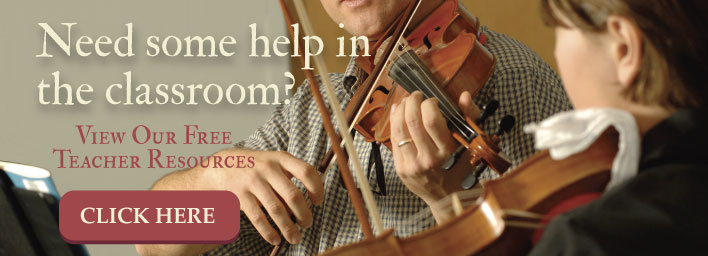Techniques for Teaching Students That are Hearing Impaired

Teaching someone with a hearing impairment how to play an instrument is not oxymoronic. It's challenging. But there's no reason to cut off people in this community from the rewards of learning an instrument. None of us are Beethoven, so let's not make the mistake of thinking it requires genius to bridge the gap between playing music and hearing what's being played.
If you do want to explore teaching music or an instrument to someone with impaired hearing, this is a good primer to help get you on your way.
Distinguish between hearing impaired and deaf
Being hearing impaired and being deaf isn't the same thing. Both deaf and hearing-impaired people can be taught music and instruments, but it's essential to understand the distinction.
Hearing impairment covers a range. Technically, being deaf is on the far end of that range. A person is formally considered to be deaf if their "hearing loss so severe that there is very little or no functional hearing." Generally, someone who is deaf still won't be able to hear speech with a hearing aid.
The range of being hearing impaired can run anywhere from slight or mild up to entirely deaf. The level of hearing is based on the decibel range the person can hear. Decibels measure loudness.
However, you also want to be aware of the frequencies that fall in or out of a hearing-impaired student's hearing range. The frequency, measured in hertz, aligns closely with pitch. Frequency and pitch don't increase or decrease is exact alignment, but they are linked. Depending on different variables, a violin can produce a sound frequency anywhere between 200 to 4000 hertz.
Thus, the first step to teaching a hearing-impaired or deaf student is to understand what their individual hearing profile. An audiologist can test and document hearing profiles. Such a student will likely already have a relationship with an audiologist who will be a great resource to help to develop a teaching plan.
Selecting the right instrument and music
Understanding the frequency range of a student is very helpful when selecting an instrument. They don't need to be forced into an instrument completely within their range. That instrument might not even exist! However, you can help them explore their options, while including frequency range as one factor to be considered.
For example, pitch can be challenging for a hearing-impaired student, but they often excel at following a beat. Complex rhythms can be a challenge, but percussion instruments can be a good choice.
The string family also provides good options. With violin at the high end of the register, this might be particularly challenging for students with a profound hearing impairment at mid to high ranges. Most hearing impairment occurs at the upper end rather than the low end. For that reason, the lower register strings can be terrific choices too.
Here's a list of frequency ranges of all sorts of instruments. If you scroll to the top of this link, you'll find a chart of note frequencies and Acoustic calculator. This information is valuable because a hearing-impaired student's frequency range also impacts what works will be easier to master than others, based on the composition's range.
However, don't feel locked in by a composition's range. You do have options, which we'll talk about below.
Tips to help both student and teacher
Once you understand the details of a student's hearing impairment, you can start implementing the right techniques to facilitate teaching.
Setting up channels of communication between you is vital. This can include hand, finger, or head signals. Lip reading and verbal direction may also be options. Again, it depends on the student. In all cases, set up your modes of communication with the student at the start so you each know how to communicate with each other.
Because so much of the communication will be visual, be mindful of the physical set-up. A good light source is important. Yet if you're in front of a window, there may be time during the day where sunlight actually creates a glare. If the hearing-impaired student is part of the orchestra or band, make sure the student is sitting somewhere, they can always see you clearly and be able to notice your gestures to them.
Also, try to minimize extraneous noises that can interfere with what the student can hear. This can be difficult in classroom situations. However, enlisting the other students to assist a hearing-impaired student to be part of the orchestra or band can be a great experience for everyone.
There are also tricks you can use to maximize the frequency and decibel range the hearing-impaired student can hear.
For example, the default setting for a hearing aid is for conversation. Hearing aids do have other settings. Work with the student's audiologist to figure out which preset options, or even customized setting options, are available on the hearing aid are most advantageous for playing music.
You can also have passages of a composition that are outside the student's range transposed to octaves in their range. For private instruction, this may be enough. If the student is part of a group, they can practice at the octaves they can hear more easily. The muscle memory can then help carry them through group rehearsals and performances.
Don't ignore the student or the challenge
Teaching a hearing-impaired student will definitely take extra effort. Many of them may even be interested to learn an instrument, but not think it's possible for them. Learning how to teach such students puts you in a place to open this world up to them. Not too shabby.


